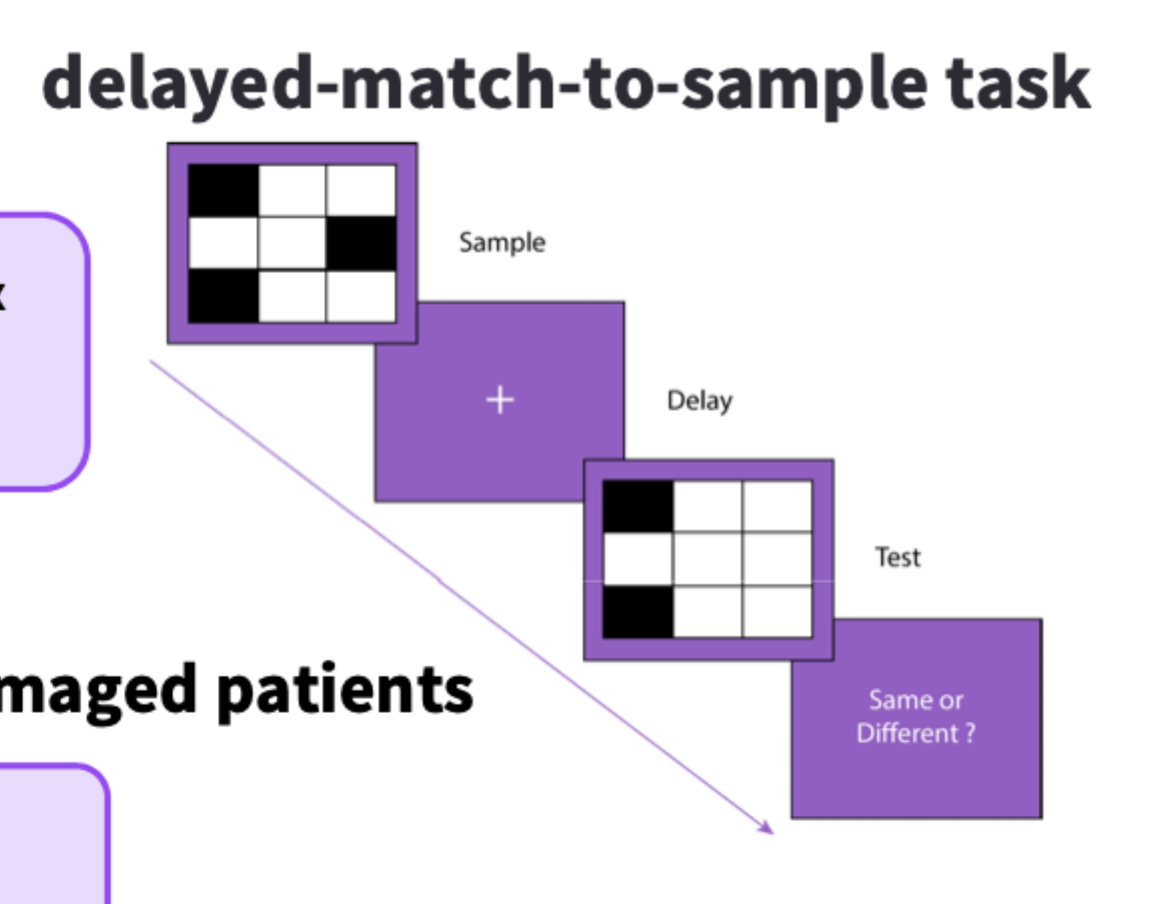Chapter 6 - Short term and working memory
1/22
There's no tags or description
Looks like no tags are added yet.
Name | Mastery | Learn | Test | Matching | Spaced |
|---|
No study sessions yet.
23 Terms
What is memory?
the process of using the info obtained from the past to generate some cognitive function in the present
process: encoding, storage, retrieval
Mechanisms of memory
Encoding
the initial info processing so its represented in the nervous system
Storage
information encoded by the nervous system remains encoded in some form for a longer duration then immediate processing.
Retrieval
being able to cognitively access stored info for a given purpose
*if smthn is not encoded in the nervous system, it can never be remembered.
Measures of memory. Duration and Capacity
capacity
how much info a memory system can hold
certain types of memory can process more or less info compared to others
STM<LTM
duration
how long information remains in a memory system
some types of info are lost very quickly from memory while others are retained for a lifetime
childhood phone number>this mornings breakfast
The Multistore model of memory. Atkinson and Shiffrin (1968).
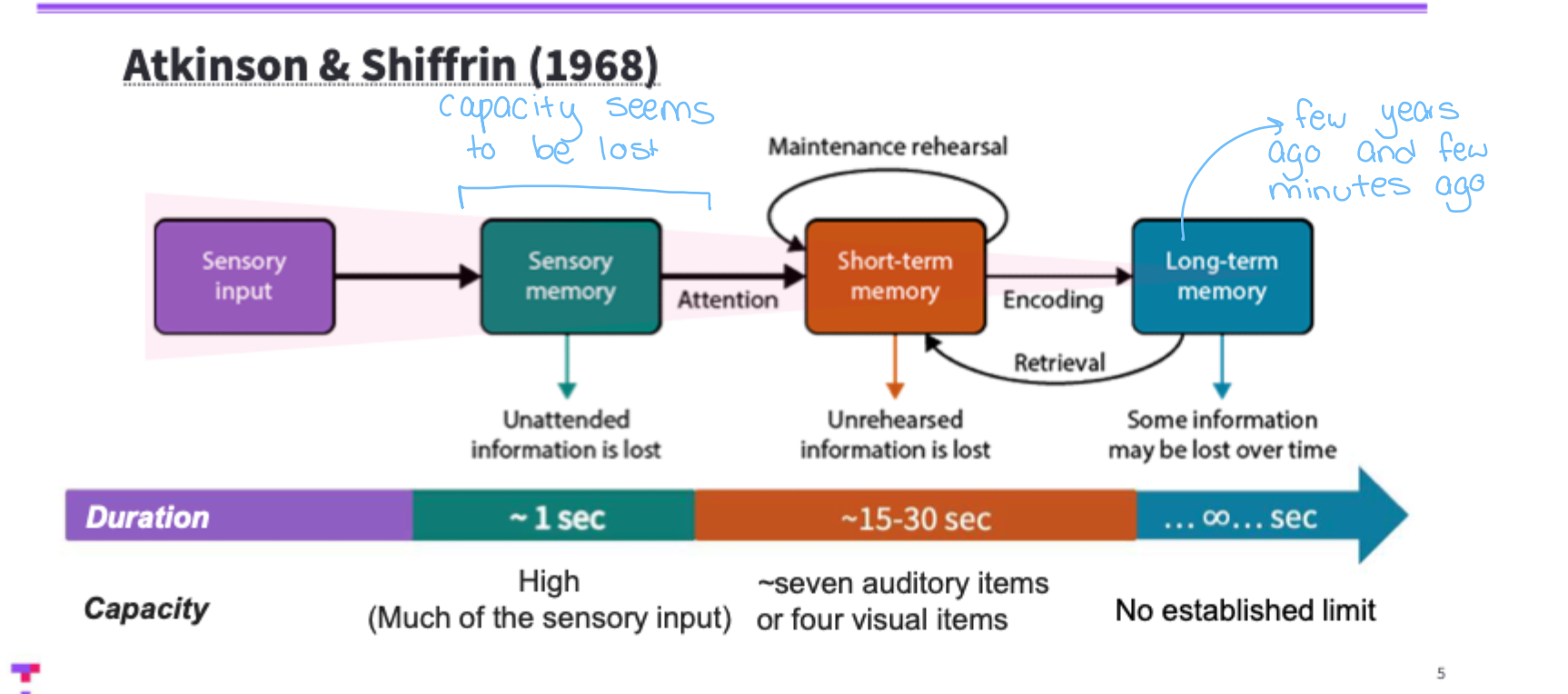
Stage 1: Sensory Memory
Function: briefly stores the info just encoded by sensory organs
purpose: holds memory in place before it is selected by attention and passed to STM.
*following sensory perception, info is retained for a brief period.
Sensory memory: Persistence of vision
you can directly see info that enters the eye moments ago
moving objects are perceived as speed out
fireworks
this occurs cuz object tracing remains in the visual system after object has moved
Sensory memory capacity 1: Sperling 1960
How much information is stored in sensory memory?
Whole report condition: exposed to letters for 15-500ms, could barely recall (25%), mostly rows that they were attending to.
partial report condition: exposed to letters while hearing a corresponding auditory tone, could recall most letters following the auditory cue.
decreased to zero after 1 sec delay
this suggests that participants could bring line of letters to STM even after it had disappeared.
in other trials when sperling increased time btw when participants saw the letters and heard the tone, fewer letters were recalled.
results: the shorted the delay btw stimulus and tone, the higher the letter recall
sensory memory: iconic and echoic memory
iconic
high capacity/short duration
echoic
auditory form of sensory memory
Stage 2: STM
Function
stores attended information from sensory memory for 15-30 seconds
Purpose
holds info in place until it can be used for some behavioural task
holds only information that can be repeated/rehearsed for encoding
only encoded info is moved to long term memory for future retrieval
e.g repeated a phone number someone js told you for a later time.
auditory STM: 7 items
visual STM: 4 items
STM capacity
miller (1956) discovered the surprisingly stable capacity of auditory STM
different people have different stable reliable ability of that number of items
presented participants with lists of letters, or numbers, or words and asked them to repeat in order and noticed that people can recall an avg of 7 items
reliable across trials
Chunking
combination of letters that constituents to a meaningful whole
the capacity to chunk info into larger units depends on engaging LTM where patterns of previously encountered combinations are held. (see example in slides)
capacity: 7 chunks
Chunking in Visual STM
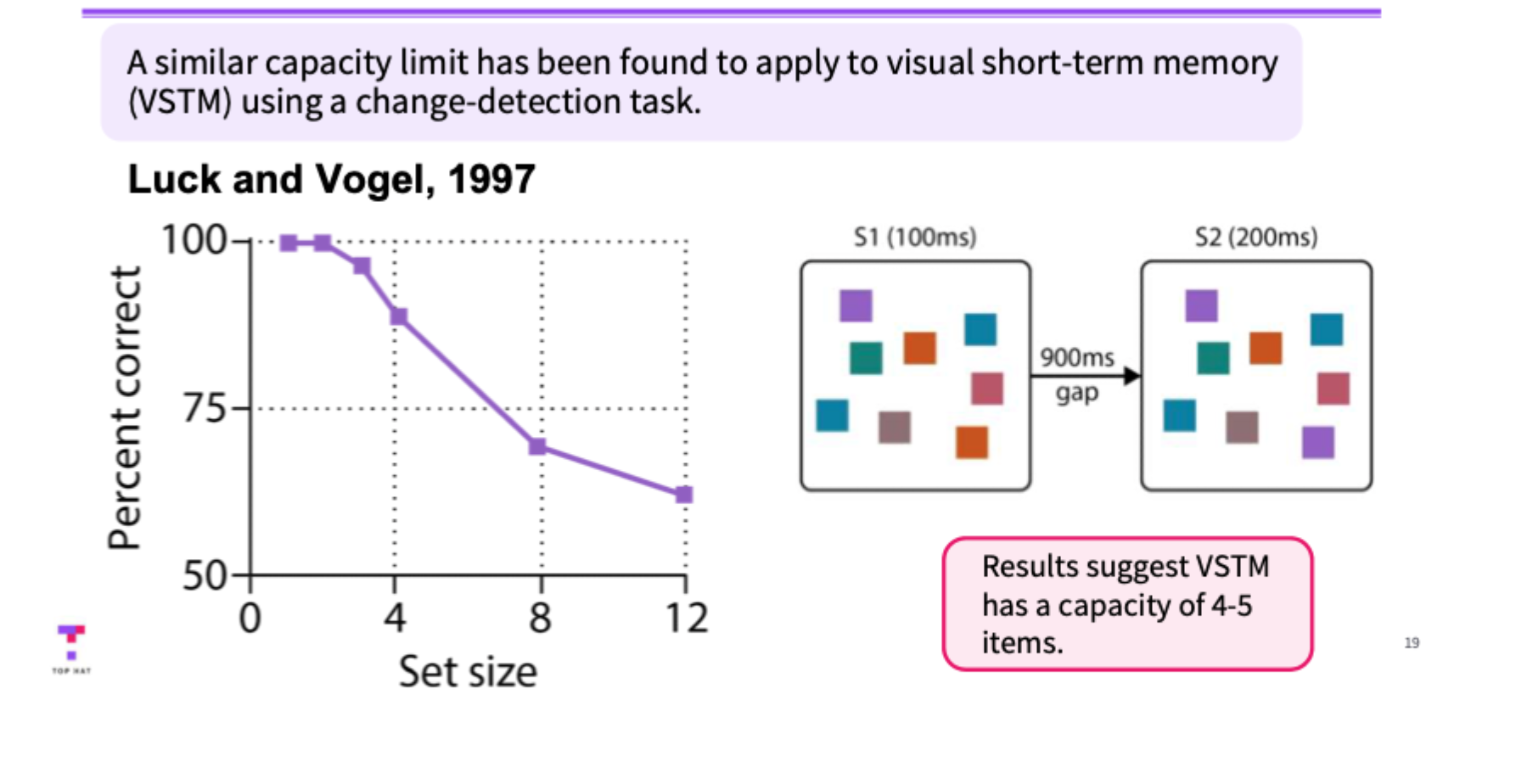
Chunking Expertise
Power of chuncking
the ability to chunk can sometimes give the appearance of super memory and people dont rly do this cuz they have a better memory but rather a skilled ability to form large chunks.
Chase and Simon (1973) examined the effect of expertise comparing chess experts and novices ability to memorize configurations of chess pieces. they found that when its correct placements the experts did better but for random placements they did about the same.
experts greater ability is due to them being able to combine certain configurations into meaningful chunks.
Duration of STM:
forever as long as u can rehearse. rehearsal is the repetition which reactivates the initial coding.
Brown peterson task: the duration of STM without rehearsal is about 15 seconds.
Causes of Forgetting in STM
Decay: forgetting just cause of the passage of time
Interference: New info that comes into memory serves the displace older info
retroactive: info causes u to forget smthn in the past
proactive: info causes u to forget smthn u could learn in the future
Peterson 1959
memorize 15,23,49 then count back from 76.96,64 to prevent rehersal so people forgot the OG info in 15-30 seconds and this was just thought to be decay.
Keppel and Underwood
early trials: people remembered more accurately, and in the later ones they started forgetting more quickly so interference also cuz previous memories competed with new ones.
Lowandowsky and Badley
computer recall typing task where articulatory suppression was used to prevent rehearsal
Challenged Peterson and Peterson cuz participants remembered even as time passed on as long as theres no interference thus proving that decay isn’t a good cause of forgetting.
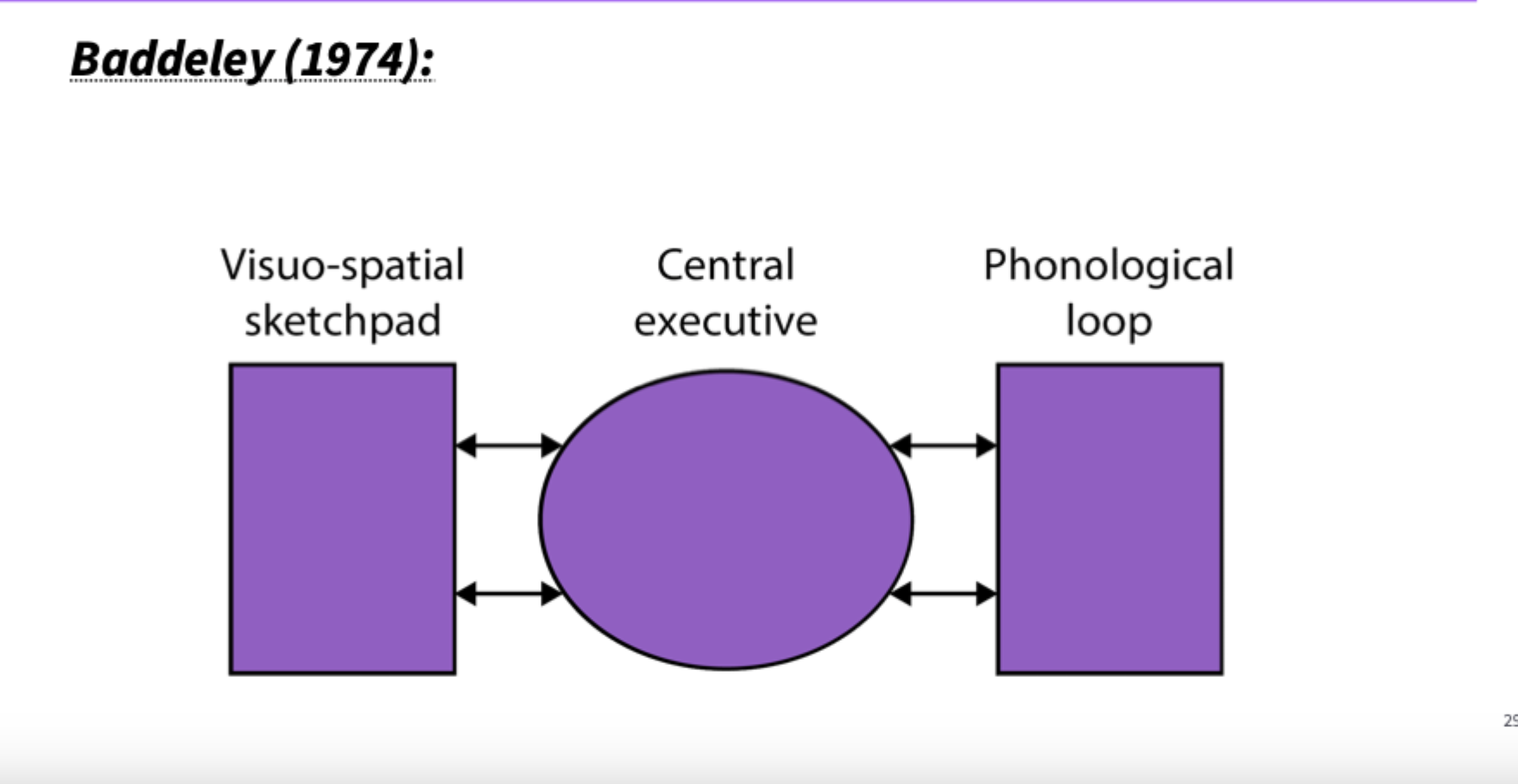
The working model of memory (Conrad and Brooks)
two types: auditory and visual
Conrad (1964) found that when people had to memorize a list of letters, they had more difficulty when the letters sourness more similar to eachother vs when they didn't . ACOUSTIC CONFUSIONS. (ctvb is harder then carlm)
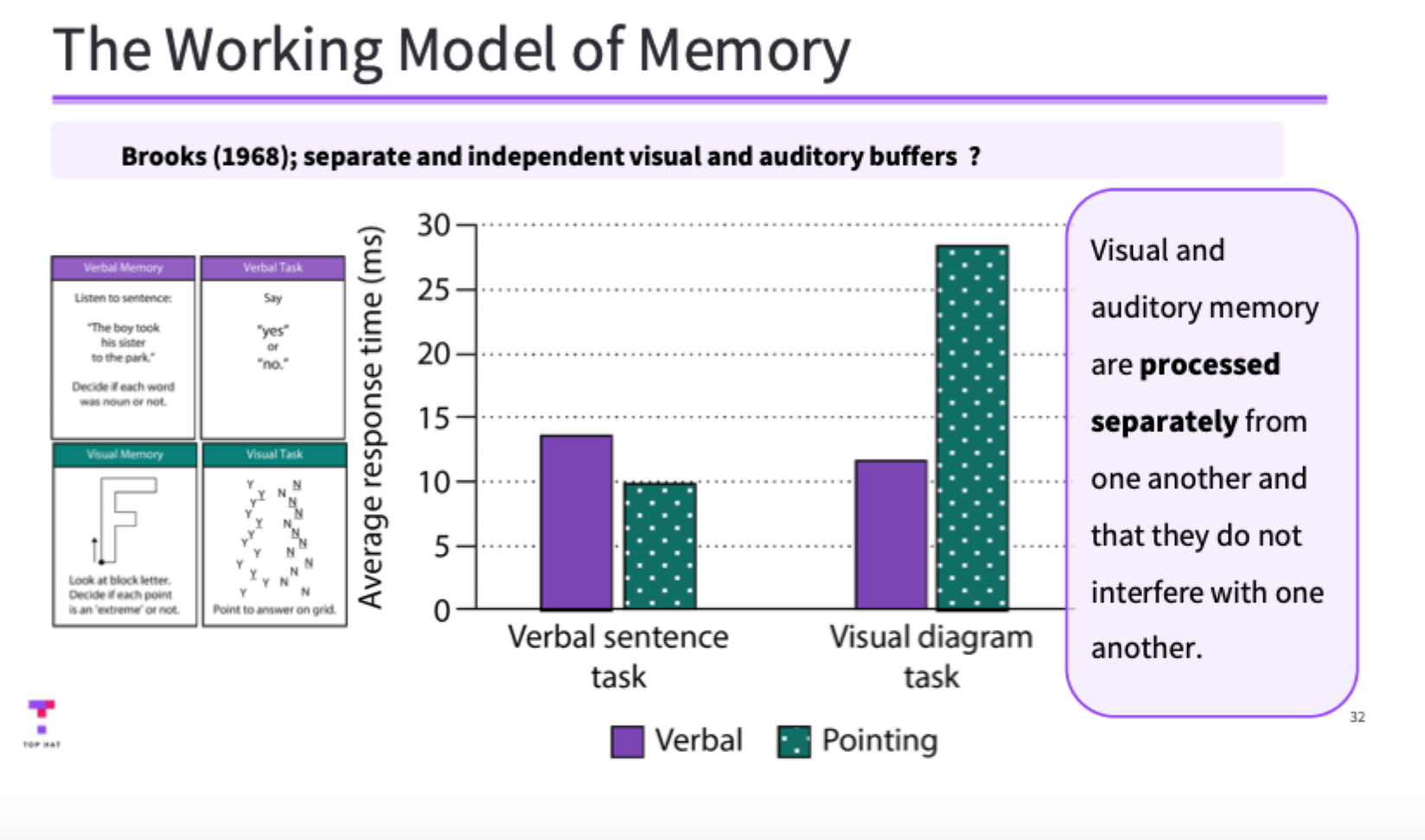
The central executive in working memory
Vogel et al (2005)
Some researchers believe that deficits in memory that are associated with age are acc due to inability to filter out unwanted information from WM.
age related memory decline may be due to a decline in the central executive rather than the memory stores themselves.
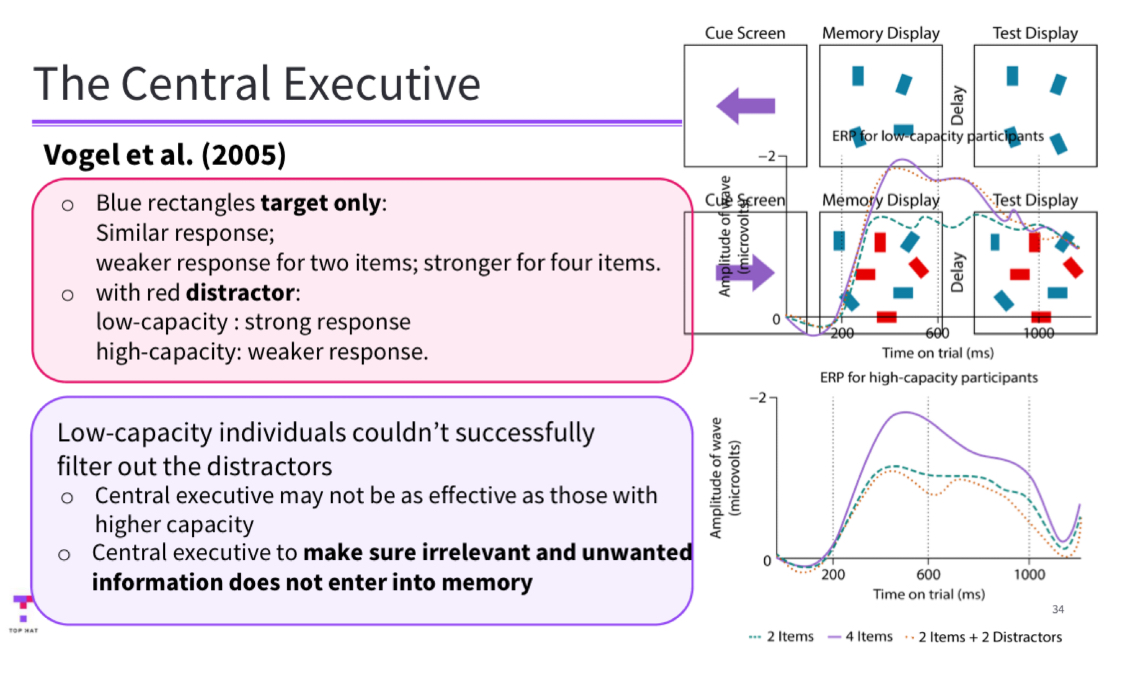
The episodic buffer
Challenging that visual and auditory memory are separate.
people can rmr more items when they form a coherent story: phonological loop must somehow interact with LTM. Concious experience appears to bind tgt different modalities.
The model in the picture suggests that theres a separate time limited model that combines info across all the diff stores including phonological loop, visual spatial sketchpad and the LTM.
Controlled by the central executive and is assumed to lead to conscious awareness of time based, multi sensory memories.
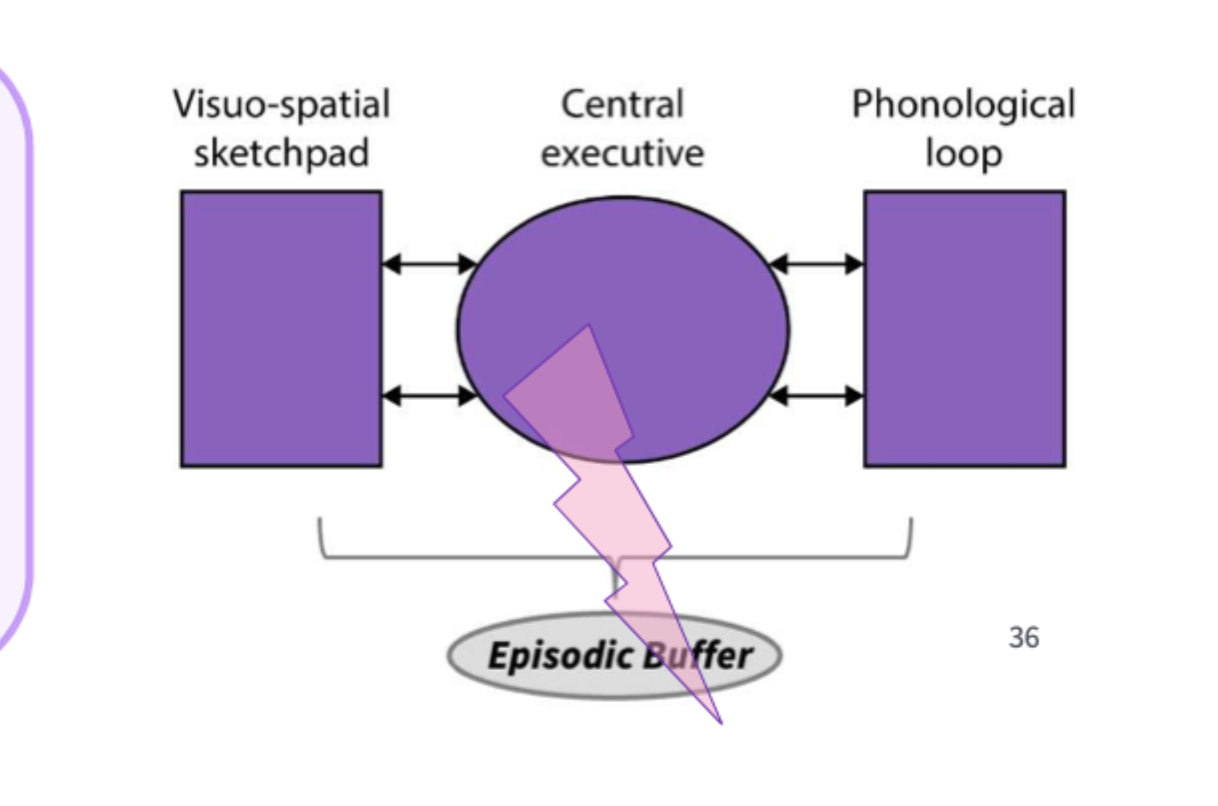
How is individual differences in working memory linked to measures of general intelligence?
correlated with measures of general intelligence. this relationship is likely due to visuo-spatial capacity, math performance, reasoning ability
these associaions have led to increased empirical work.
work has shown that musical training can lead to improvements in WM in young children.
Studies like these have led to a boom in the brain training industry.
Brain training
often consists of repeated participation in increasingly difficult WM tasks.
aim: if people can increase their WM capacity, other areas of cognition may be enhanced as well.
does it work?
controversial however data suggests WM improves with training but the connection to general intelligence is fuzzy.
brain training app Luminosity was fined by FDA cuz they made overly broad claims about cognitive improvements due to their program. further research was needed.
Where does WM happen in the brain?
no ONE region
modality specific regions
auditory: temporal
visual: occipital
frontal seems to play an important role
Studies for neural basis of STM/WM
Funabashi et al (1998): the neutron went into overdrive during the delay period (active rmring). not for non memory.
Schon et al (2008): fMRI study increased activity in the prefrontal cortex during the delay phase. suggests role of frontal cortex.
Moore et al (2012): patients show impairments on tasks similar to the delayed matching tasks.
